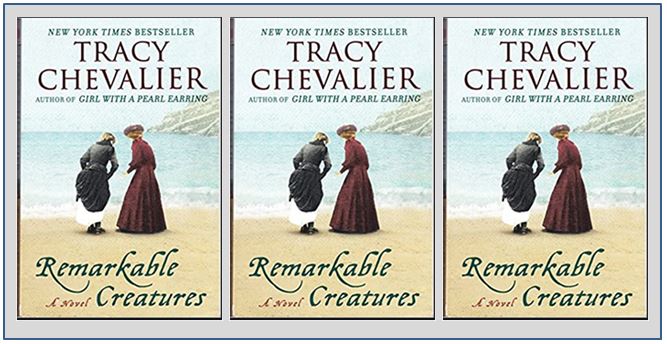A while back I wrote an article about paleontologist Mary Anning and the postage stamps that honor her amazing discovery of marine reptiles in the seaside cliffs of southern England. After reading the story, Donna Smith informed me of a historical novel she had enjoyed about Mary’s discoveries and her life in early 19th century England. I am not an avid reader of historical fiction, but I decided to give this book a try, ordering a copy online and putting it on the top of my June reading list.
“Remarkable Creatures” was written by Tracy Chevalier and published in 2009. It was listed on the New York Times Bestseller list. I found the narrative very easy to read as the author mixed actual geologic and historic events into the lifestyles and culture of the time. Women were not expected to hunt fossils, much less study them, and Mary Anning was not of the “proper class” to be taken seriously or given credit for her accomplishments regardless of her gender.
Mary discovered the first complete Ichthyosaurus in 1811 when she was 12 years old. Her second major discovery of a complete Plesiosaurus in the same Jurassic cliffs in Lyme Regis came in 1823. Both discoveries were extremely provocative at that time because they suggested that some animals had gone extinct. This violated mainstream religious beliefs of the early 19th century. Remember, Charles Darwin would not make his famous worldwide trip until the 1830’s, publishing his evolution theories for the first time in 1839. All of this is interwoven into the novel including Mary’s interactions with famous geologists, naturalists, and fossil collectors of the time such as William Buckland and Charles Lyell.
The book is available in many Wayne County and Monroe County Public Libraries. I acquired my personal copy from Amazon for only a few dollars. Folks with an interest in historical fiction or famous women might like this book. Folks interested in the development of paleontologic thinking should enjoy this book. If you fall into either category, I suggest this is might be a great summer read, some two centuries after Mary’s discovery of such “Remarkable Creatures”.
